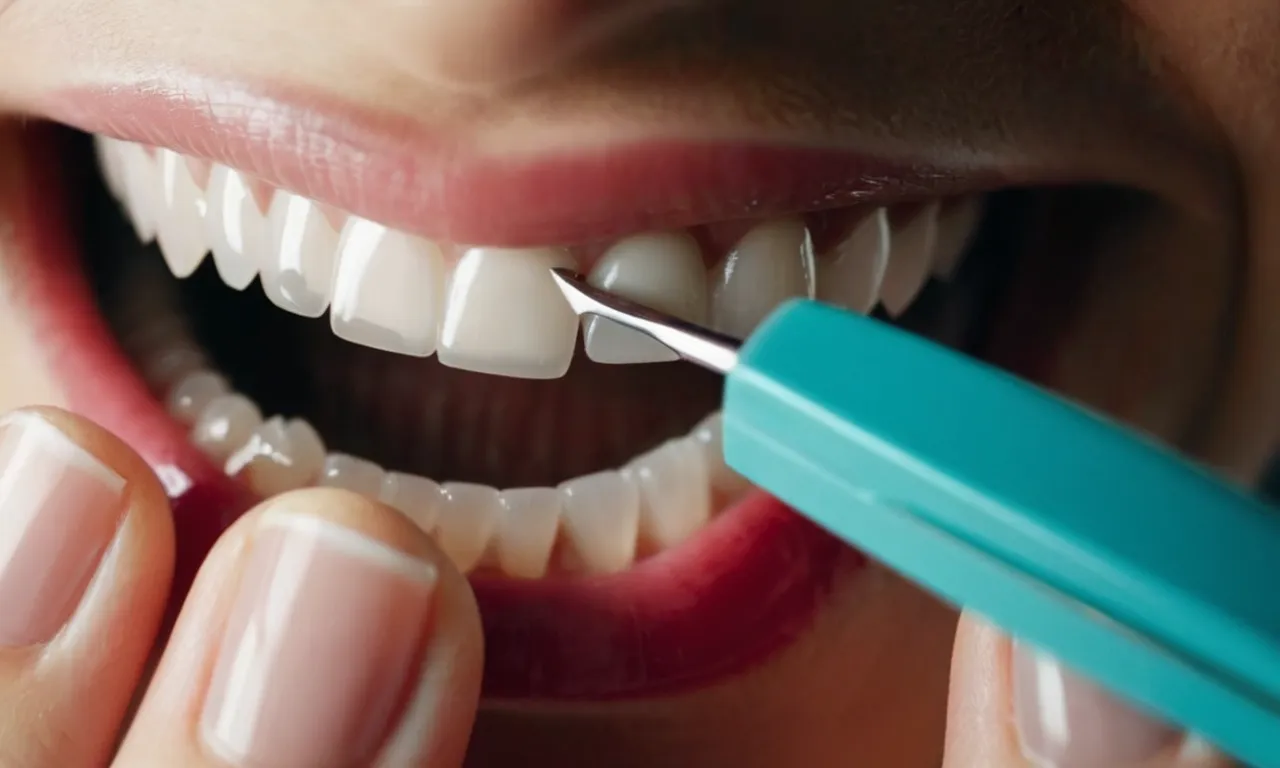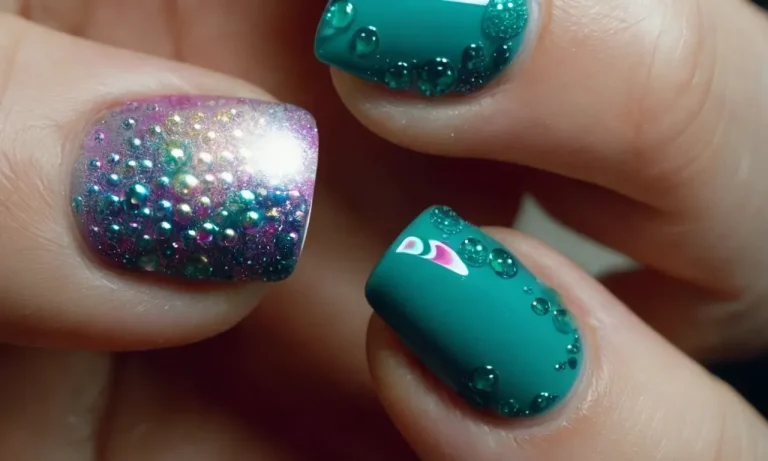How To File Your Teeth With A Nail Filer
Having smooth and even teeth improves your smile and dental health. While visiting the dentist for professional teeth filing is ideal, you may wonder if you can file your own teeth at home when you notice roughness or sharpness.
Using tools like an emery board or metal nail file allow you to gently buff down problem areas on your teeth. However, take care with DIY teeth filing, as you can risk damaging tooth enamel or causing sensitivity if you apply too much pressure.
If you need a quick fix for a rough tooth edge, lightly buffing it with a nail file can provide temporary smoothing. But proceed cautiously and avoid grinding too aggressively on your teeth.
Considerations Before Filing Teeth
Consult your dentist first
Before attempting to file your own teeth, it’s crucial to consult your dentist first. They can examine your teeth and determine if filing is truly necessary or advisable. Filing teeth can lead to sensitivity, damage, or other oral health issues if not done properly.
Your dentist can advise you on the safest methods and tools to use, or may recommend professional filing instead.
Specifically, you’ll want your dentist to check for things like:
- Tooth decay or cracks that could worsen from filing
- Nerve exposure that may occur from removing too much enamel
- Alignment issues that should be addressed in other ways
If you get the go-ahead to file your own teeth, your dentist can show you the safest techniques and advise you on when to stop. This helps prevent irreparable damage. Additionally, they may recommend using prescription-strength fluoride toothpaste or other treatments after filing to strengthen and protect teeth.
Risks of incorrectly filing teeth
Filing teeth without guidance from a dentist carries many risks that can seriously impact your oral health over time. Potential issues include:
- Tooth sensitivity: Removing enamel exposes dentin underneath, which contains nerve endings. This typically leads to pain from hot or cold foods.
- Increased decay: The protective enamel layer protects teeth from decay. Without enough enamel, teeth are more prone to cavities and decay.
- Permanent nerve damage: Aggressively filing or filing horizontal scratches can expose tooth pulp and nerves, leading to serious pain and potential need for root canals.
- Jaw alignment problems: Improperly shaping teeth can impact the way the upper and lower teeth fit together, leading to jaw pain and bite issues.
- Aesthetic issues: Over-filing teeth often leads to unnatural shapes, gaps, or discomfort from exposed dentin.
Additionally, using unsuitable tools like metal nail files or sandpaper will damage enamel much more severely than proper dental files. It’s simply not worth the risks of long-term tooth and nerve damage.
When it’s appropriate to file teeth yourself
In limited circumstances, it may be appropriate to carefully file your own teeth under your dentist’s guidance. This includes filing down minor tooth irregularities or attempting to reduce discomfort from specific alignment issues in between regular dental visits.
However, extensive filing should always be conducted professionally.
Additionally, you may try OTC enamel-safe dental files designed for temporary, mild use between dental cleanings. Even then, only use gentle pressure and stop immediately if you feel any sensitivity. This helps prevent more harm than good.
According to the American Dental Association, examples of appropriate reasons to file your own teeth may include:1:
- Smoothing minor tooth irregularities like slightly uneven edges
- Gently filing temporary discomfort from erupting wisdom teeth
- Filing protruding orthodontic wires
- Carefully reducing sharp points on teeth, for example after braces are removed
However, extensive issues should always be managed professionally. Damaging enamel severely through at-home filing can lead to lifetime tooth sensitivity or necessitate dental crowns to restore teeth.
Choosing the Right Nail File for Teeth
Look for a gentle abrasive file
When choosing a nail file to use on your teeth, it’s important to find one with a gentle abrasive surface. The file needs to be just abrasive enough to smooth down enamel without damaging it. Look for nail files made of ceramic, crystal, or other finely-gritted materials.
Emery boards and metal nail files may be too harsh for teeth and could scrape off enamel. Stick with a file rated fine or medium grit for safest and most effective teeth filing.
Avoid metal nail files
Metal nail files should be avoided for filing teeth. The abrasive surface of metal files is often too coarse and can actually damage tooth enamel. Using a metal file risks scraping off too much enamel, weakening teeth and making them prone to cavities or sensitivity.
Instead, opt for a gentle, fine-grit crystal or ceramic nail file. These provide just enough abrasion to smooth teeth without stripping away enamel. While metal files work great for fingernails, they’re too harsh for tooth enamel.
Disinfect file before and after use
It’s crucial to properly disinfect a nail file before and after using it on your teeth. Nail files can harbor bacteria, fungi, and viruses that you don’t want introduced into your mouth. Prior to use, soak the file in rubbing alcohol for 10 minutes. Be sure to rinse it afterwards.
When you’re done filing, disinfect the file again by soaking it in alcohol to kill any germs from your mouth. Let the file fully dry before storing. Disinfecting before and after each use reduces the risk of infections. Stay healthy!
Filing Technique and Tips
Gently buff in small circular motions
When filing your teeth, use gentle, small circular motions rather than sawing back and forth aggressively. Apply light pressure and take your time to smooth out any rough spots or sharp edges. This prevents excessive enamel removal and damage to your teeth.
Think of it like gently buffing your nails, not trying to aggressively file them down. Patience and a delicate touch is key for safe at-home tooth filing.
Focus only on problem spots
Don’t file your entire tooth surface or you may end up with excessive thinning and sensitivity. Just target any specific rough, sharp areas or overgrown edges that are causing discomfort. You only need a few swipes of the nail file on the isolated spot to smooth it out.
Resist the temptation to file down your entire tooth. This can lead to problems like temperature sensitivity, cracks, and increased staining over time. Focus on problem spots only.
Rinse mouth to remove filing dust
Be sure to rinse your mouth thoroughly with water when you are done filing to wash away any enamel dust or particles. Swish water around your mouth and spit it out until the water runs clear. Leaving filing debris in your mouth can be damaging to your tooth enamel and gum health over time.
A good rinse will leave your mouth clean and prevent irritation. You can even use an antiseptic mouthwash for extra protection against bacteria.
Use mouthguard to protect teeth
Wearing a mouthguard designed for teeth grinding helps protect your teeth from excess filing. The mouthguard shields your teeth from over-filing and prevents damage to teeth you are not targeting. It also protects your enamel from being worn down during filing.
You can find mouthguards online or in most drugstores in the oral health section. They mold to your teeth for the most protection and comfort. Using a mouthguard gives you more freedom to file without worrying about harming other teeth.
Some other filing tips include:
– Go slowly and gently to avoid enamel damage
– Use light, circular strokes concentrating on one spot
– File just enough to smooth, don’t dramatically alter shape
– Rinse with water when done to remove debris
– Use a chewing motion after to smooth out edges
With the right technique, a nail file can safely and effectively remove tooth imperfections. Focus on problem areas and avoid over-filing for the best results. Protect your tooth enamel and you’ll have a bright, healthy smile.
Aftercare Recommendations
Filing your teeth with a nail file, while an affordable DIY option, can lead to complications like infection or permanent damage if not cared for properly afterward. Be sure to take precautions and follow these aftercare tips from dental professionals.
Use fluoride toothpaste and mouthwash
Fluoride helps strengthen tooth enamel and prevent cavities. Using fluoride toothpaste and mouthwash after filing your teeth is crucial to help protect them.
- Brush with a soft-bristle toothbrush and fluoride toothpaste at least twice per day, especially after meals.
- Use an antibacterial, alcohol-free mouthwash containing fluoride once or twice daily.
- Avoid whitening toothpastes, which can further wear down enamel.
Avoid hard, crunchy, or sticky foods
Your teeth may be sensitive after filing, so take care with what you eat and chew.
- Stay away from hard foods like nuts, seeds, hard candy, ice cubes, popcorn kernels, etc. These could cause pain or chip weakened areas.
- Avoid very hot, very cold, sugary, acidic, or spicy foods and drinks which can irritate sensitive teeth.
- Cut food into small pieces and chew slowly and gently, especially on the side you filed.
See your dentist after filing teeth
Consult a dentist as soon as possible, even if you have no issues. A professional assessment is vital for catching potential problems early and avoiding extensive treatment later.
Your dentist may:
- Take x-rays to check for underlying issues like cracks or infection.
- Smooth out rough spots and reshape teeth for even alignment.
- Apply fluoride treatments or prescription toothpastes to aid remineralization.
- Recommend crowns if enamel damage is severe.
A 2021 survey of dentists suggests that 76% have treated complications from patient attempts at DIY dentistry. Risks like fractures and pulp exposure can lead to extraction or implants. Protect your smile with professional aftercare!
When to See a Dentist Instead
Extensive tooth shape changes needed
If you require significant modifications to the shape and length of your teeth that go beyond minor filing and smoothing, it is best to consult a professional dentist. Trying extensive do-it-yourself tooth alterations risks damaging nerve endings, weakening tooth structure over time, or creating uneven wear that leads to further problems.
Dentists have specialized equipment like dental burs to safely and precisely reshape teeth. They also have training to expertly match tooth proportions for an aesthetically pleasing smile. While using a basic nail file seems tempting for saving money, the results likely will not match what an experienced dentist can deliver.
Teeth are highly sensitive after filing
You should see your dentist promptly if filing your teeth with a nail file leaves them extremely sensitive to hot and cold foods or beverages. Lingering sensitivity that does not resolve within a few days may indicate exposure of the tooth’s inner pulp chamber.
Dentists can check for pulp exposure using dental x-rays, cold testing, or an electric pulp tester. From there, they may recommend a root canal or placing a sedative dressing over the filing site to calm aggravated nerves.
Taking over-the-counter pain relievers rarely resolves severe tooth sensitivity – visiting a professional is important.
Filing causes pain or bleeding
Nail filing teeth should never cause significant pain or bleeding. These symptoms likely indicate filing too aggressively into the surrounding gum tissue or affecting nerves within the tooth. As mentioned, exposed dental pulp increases sensitivity drastically and may require a root canal if inflamed extensively.
Additionally, over-filing near the gumline can permanently damage healthy gum tissue. This may cause problems like increased tooth looseness or decay risk over time. Any filing tactics leading to bleeding issues or prolonged tooth pain warrants seeing an expert dentist to assess and remedy the situation appropriately.
Conclusion
Filing your own teeth with a nail file can provide temporary smoothing if done gently and carefully. However, take precautions like disinfecting tools, using a light touch, and avoiding metal files. Check with your dentist before attempting to reshape your teeth in any significant way, as professional filing is safest for an improved smile.
With some mindfulness, you can safely buff minor tooth flaws at home between dental visits.







